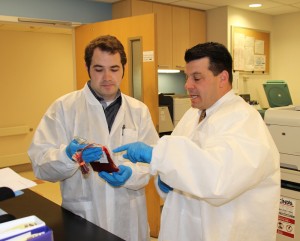
Photo by Mike Arduser, Missouri Department of
Conservation
If you visit one of Missouri’s native prairie reserves when the coneflowers are blooming, you will see plenty of bees buzzing around them. You may not realize that some of these bees are a single species that collects pollen only from the pale purple coneflower and only on native prairie. This coneflower specialist flies for just a few weeks each year, collecting the pollen that will feed its offspring until the coneflower blooms again.
The coneflower bee, like the approximately 450 other bee species native to this area, seems to be doing OK. With a few important exceptions, according to Missouri Department of Conservation naturalist Mike Arduser, the native bee pollinators have been holding their own. Arduser has been keeping track of bee diversity in the Midwest for about thirty years.
Continue reading Most of Missouri’s native bees are thriving


